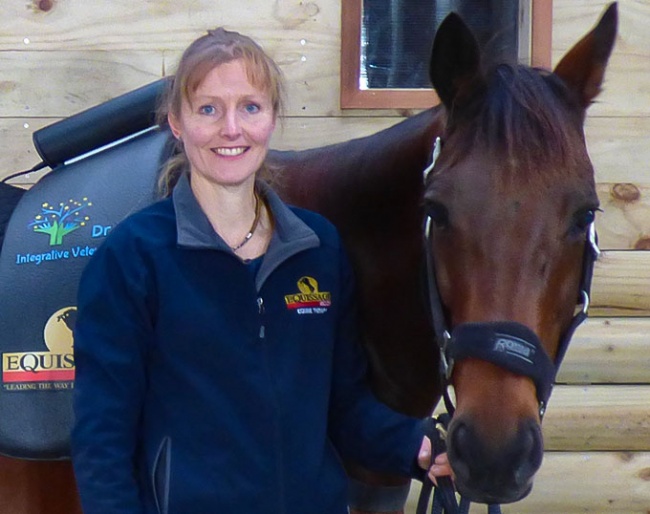
Guest columnist of this week is Dr. Fiona Mead who responds to Katrina Wüst's column titled "Welfare is an Essential Element of Dressage Judging". Mead is a veterinarian and animal biomechanical practitioner trained in acupuncture, animal osteopathy and chiropractic care.
"People have an acceptable standard of current 'normality' in dressage tests"
Sadly I was most disappointed in the 'head in the clouds' view point of Katrina Wüst regarding dressage and its responsibility or lack there of, towards welfare of horses. Perhaps at higher competition levels there are less welfare issues.
Current Normality
Much research has been done on pain signals on the horses' facial expressions, yet these are yet to be wholly embraced and taught to judges as a means of affecting the marking schedule. We still have judges that do not understand the true implication of the C2 break/poll behind the vertical and its subsequent effects on the general lack of relaxation through the horses' bodies and tension in joints. Just because so many people have an acceptable standard of current 'normality' in dressage tests, does not mean it is actually right, nor the best way of riding horses for longevity.
One simply has to look at the insurance claims on horses and loss of use, to see that many horses are broken in their prime. True, all these horses are not solely used for dressage, a portion of them were/are.
To simply say that riders won't put their dressage score marks at risk as an argument and proof that welfare is not an issue in the dressage world is short sighted and narrow minded. Wearing blinkers does not mean an issue doesn't exist, it just allows the issue to exist in its current state for longer. Until the FEI and all associated affiliates with dressage wake up to the horrific training that some - not all - dressage horses are subjected to, the sport will not be noble and noteworthy of its achievements.
FEI is responsible for levels of training
As a veterinarian trained in animal biomechanics, I see many horses broken down at a young age, due to the pressure placed on their bodies with the ways of training and gadgets used to train them. The development of the horse's musculoskeletal system needs to be reflected in age appropriate competition levels. The FEI is responsible for levels of training that riders aspire to, based on their young horse levels. Grand Prix on a 6 or even 8 year old horse will most likely cause breakdown at an earlier age than had the horse been brought on more slowly and allowed to develop more naturally.
Signs of Tension Ignored?
Grinding of teeth, lip smacking and tongue lolling can be masked to some extent by closing the jaw with a tighter noseband, but within the judging curriculum these signs of tension are accepted as normal up to a point. As dressage is meant to be a sport of harmonious partnership, I would beg to postulate that at least 50% of dressage horses are not actual willing and cooperative partners. Does this mean that they are deprived of basic welfare necessities....no probably not. But it does mean their lifestyle and training could be optimized, so they experience more relaxation and quality of life that is more natural for a horse.
Let's at least remain open to discussing how we can continue to improve standards of care and address welfare issues that do arise in the dressage world, rather than sweep any such knowledge of their existence under the carpet.
by Dr Fiona Mead
Related Links
Katrina Wüst: "Welfare is an Essential Element of Dressage Judging"
Minna Tallberg: “You Can’t Use Force Anymore”
Minna Tallberg: Stakeholders Benefit from a Status Quo
Dr. Inga Wolframm: "What is a Piece of Tack?"
Alena Jenn: "What is Worse?"